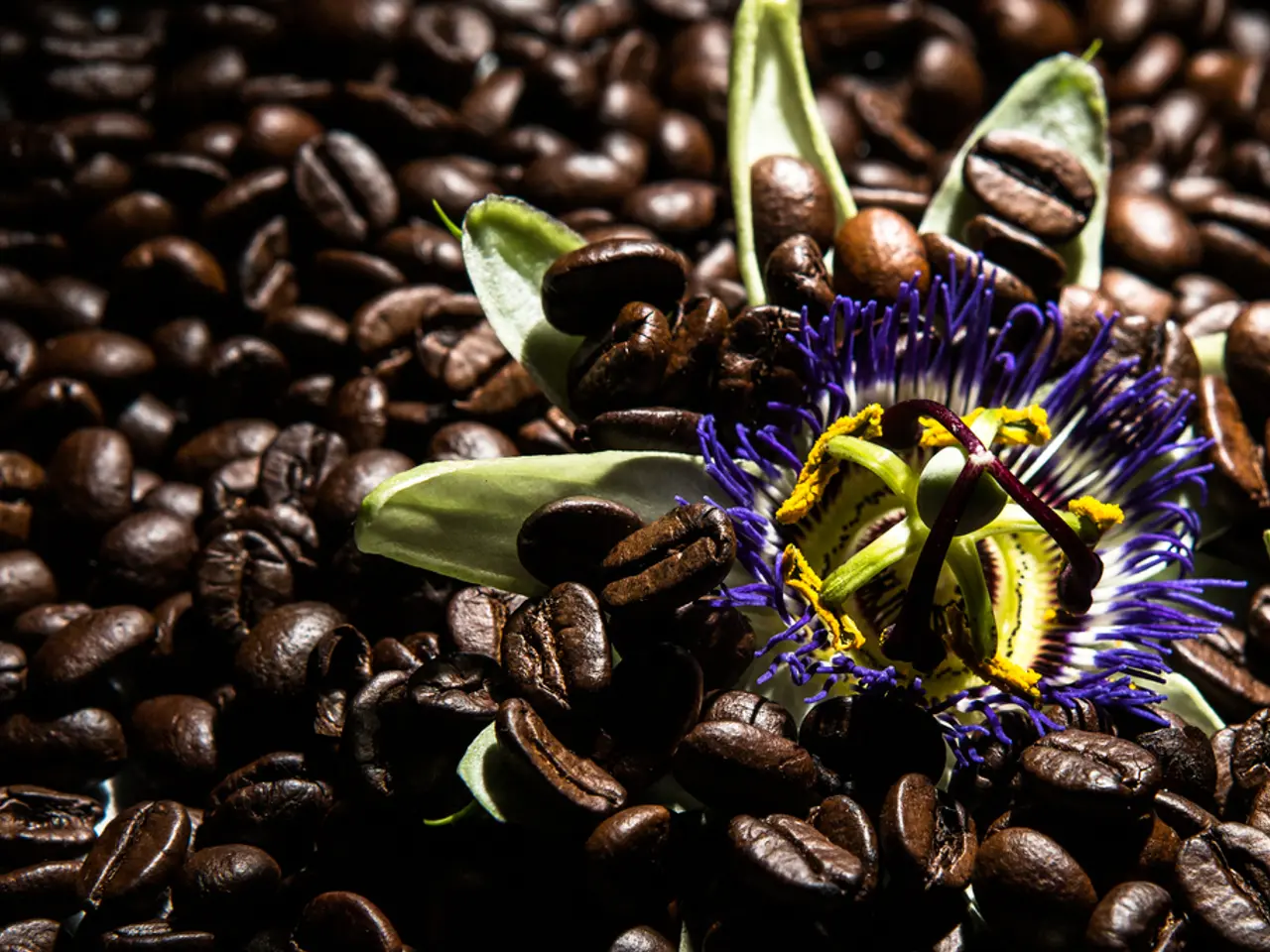Coffee grounds in the garden: Weighing the benefits and drawbacks
Used coffee grounds can be more than just a morning pick-me-up - they can also serve as a valuable resource for your garden. By following best practices, you can safely enhance soil fertility and structure while deterring pests.
Coffee grounds, rich in nutrients like nitrogen, phosphorus, potassium, and trace minerals, can improve soil structure by enhancing aeration and water retention. They are also a magnet for earthworms, boosting soil health [1][3][5].
Gardeners have found ways to use coffee grounds in the garden. Mixing them into compost or blending with other organic matter is a safer way to use them. Composting coffee grounds first, in a ratio around 1:3 with "brown" materials like dried leaves or paper, is recommended. Wait until the compost is fully decomposed before applying it to soil to avoid mold or compaction [3][5].
Using thin layers of coffee grounds (less than 1/2 inch) as mulch, covered by coarser mulch such as wood chips, is another effective method. This prevents the grounds from compacting and blocking air/water flow [5].
Sprinkling grounds around plants can help deter pests like slugs and snails due to their caffeine content and texture [1][4]. However, fresh coffee grounds can be slightly acidic and may harm sensitive or young plants, especially seedlings or slow-growing species [1][3].
Excess caffeine residues in fresh grounds can suppress seed germination and slow plant growth, as demonstrated with crops like tomato plants [2]. Thick layers of dry coffee grounds can compact, blocking water and air, which harms roots [3][5].
Therefore, it is recommended to let coffee grounds dry out before using them in a compost pile or sprinkling them directly on the soil. Used coffee grounds are safe around plants, even those from strong coffee, as long as they have been used [6].
However, it's important to note that not all plants appreciate the acidity of coffee grounds; plants that prefer alkaline soil will not benefit from their addition [4].
Caffeine in coffee grounds can be toxic to cats and dogs, affecting their heart and blood pressure and potentially causing seizures [7]. Therefore, it's best to keep coffee grounds out of reach of pets.
Orange peels, on the other hand, can create a natural pest deterrent in the garden [8]. To ensure the coffee grounds break down quickly, crumble them up or put them through a coarse sieve to avoid having lumps of coffee grounds, which would take longer to break down.
In summary, use coffee grounds sparingly and preferably composted to safely enhance soil fertility and structure, while avoiding direct or excessive fresh application on delicate or acid-sensitive plants. By following these guidelines, you can create a thriving garden while reducing waste.
Sources:
[1] Cotterill, K. (2020). The Ultimate Guide to Using Coffee Grounds in the Garden. She Grows Veg. [2] Bradley, L. (2021). The Benefits and Drawbacks of Using Coffee Grounds in the Garden. Easy Garden Irrigation. [3] Gardening Know How. (2021). Using Coffee Grounds in the Garden: Pros and Cons. [4] The Spruce. (2021). How to Use Coffee Grounds in Your Garden. [5] The Balance. (2021). How to Use Coffee Grounds in Your Garden. [6] The Garden Helper. (2021). Can I Use Coffee Grounds Around My Plants? [7] ASPCA. (2021). Caffeine Toxicosis in Cats. [8] The Spruce. (2021). How to Use Orange Peels in the Garden.
- Incorporating coffee grounds into your home-and-garden can improve soil health and structure, thanks to their nutrient content and ability to attract earthworms.
- To get the most benefits from coffee grounds in your garden, you should compost them first, blending them with dried leaves or paper in a ratio of around 1:3.
- By using thin layers of coffee grounds as mulch, covered by coarser materials like wood chips, you can prevent compaction and still reap the benefits for your garden.
- Beyond the garden, incorporating sustainable living practices such as composting coffee grounds can contribute to a healthier and more beautiful lifestyle at home.




